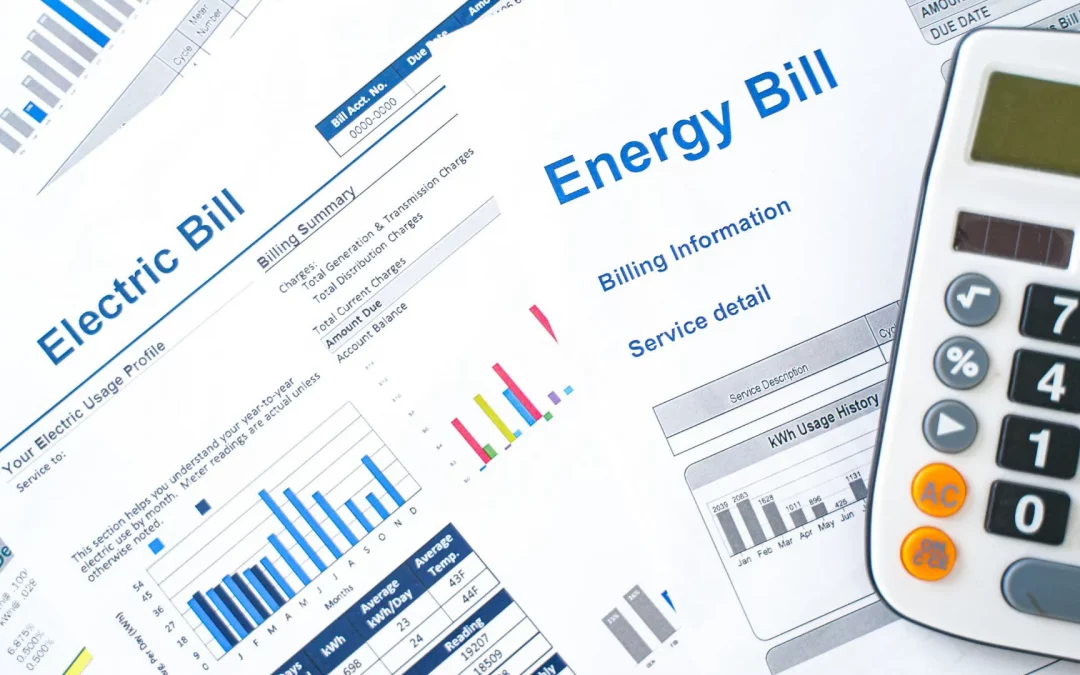11 Ways to Lower Your Utility Bills
Just like the cost of most everything else, the cost of electricity, natural gas, and fuel is getting more and more expensive. Since utility costs make up a significant part of household budgets, we want to help you reduce them by giving you 11 impactful energy-saving tips!
1. Get an Energy Audit.
You can often get a home energy audit for free by your utility company. An audit can give you great ways to lower your energy bills such as finding faulty seals on windows and doors, leaky ductwork, etc. They will also give you recommendations for repairs, efficient fixtures, and the like.
2. Take Advantage of Efficient Home/Clean Energy Tax Credits
While this obviously doesn’t lower your electric, water, or heating bills, many of the ways to reduce them involve making your home more energy efficient, and that costs money. So, you might as well take advantage of tax credits for upgrading your home to be more energy efficient (this includes both owners and renters), which covers things like:
Home energy audits: 30% of cost, up to $150.
Efficient air conditioners: 30% of cost, up to $600.
Efficient heating equipment: 30% of cost, up to $600
Efficient water heating equipment: 30% of cost, up to
Insulation materials 30% of cost.
Windows (skylights included): 30% of cost, up to $600
You can see the full list of credits here.
3. Insulation and Air Sealing
Ensuring that you protect the interior of your home from exterior cold weather in the winter and hot air in the summer is one of the most cost-effective ways to reduce energy bills (especially in colder climates).
Properly weatherstripping, caulking and insulating your home can save you around 15% on your heating and cooling costs, which averages out to be 11% or so of total energy costs.
4. Use Less Hot Water
It takes quite a bit of energy to heat water. In fact, it can account for up to 22% of a home’s energy use. Luckily there is an easy way to fix this, and no, it’s not taking cold showers.
It is common that water heaters are preset to 140ºF. This is 20ºF higher than it needs to be per the Department of Energy’s recommendation and by lowering it you could save more than $400.00 a year.
5. Choose a supplier
Some states allow you to choose who you purchase electricity or natural gas from; this is called “deregulation.” This does not change your utility—they still deliver your energy and maintain the electric grid, etc.
In a deregulated market, you can get a fixed rate on your electricity or natural gas for anywhere from 3 months to 3 years, and it can be significantly lower than your utility’s price. This also allows you to have predictable monthly bills with no surprise spikes.
If you are unsure if your state is deregulated or would like to know more about deregulation, this article will help you.
If you live in a deregulated state click here, enter your zip code and find a great plan in minutes!
6. Routine HVAC Maintenance
Ensuring your HVAC system is working optimally is a great way to help keep your energy bills down. 2 great ways to ensure your system is working are:
Hire a reputable company to check your air conditioner and/or heater once or twice a year. This will keep your system running well and lower the chance of needing costly repairs.
Ensure that the filters in your air conditioners and furnace are clean, so your system isn’t working harder than needed to cool or heat your home. Some filters can be cleaned and reused, while others need to be replaced entirely.
7. Use Your Dishwasher
Save yourself time and water and use your dishwasher. Manually cleaning dishes can use up to 27 gallons of water per day, while a newer dishwasher uses 6 gallons per cycle (older models use about 16 gallons).
8. Coil Care for Your Refrigerator
Refrigerators and freezers use quite a bit of energy to keep your food fresh, so it’s a good idea to clean their coils 1-2 times a year. Dust and dirt on refrigerator coils make them work harder.
9. Use smart power strips
Some electronics such as TVs, computers and speakers never truly power off. Instead, they sit in standby mode still using electricity. This can actually account for 5%-10% of home energy use and $100 or more a year.
Plug these electronics into a smart power strip, which cuts off the current when the devices aren’t in use. A power strip with a manual on/off switch is another good option.
10. Choose Energy Star Products
When you are purchasing new electronics or appliances look for ENERGY STAR-labeled products. Newer ENERGY STAR models meet stricter requirements and use anywhere from 10 to 50 percent less energy each year.
11. Replace old, high-flow showerheads
Newer shower heads use less water than older ones and this can save you about $35 a year per person in your home.
Not sure whether your shower head is efficient or not? Take the Showerhead Test:
- Get a bucket and your phone.
- Place the bucket underneath the showerhead.
- Turn the shower on all the way using cold water.
- Time how long it takes for one gallon of water to fall into the bucket.
Less than 24 seconds to fill a gallon of water? You do not have the most efficient showerhead because its flow exceeds the recommended 2.5 gallons per minute.
More than 24 seconds to fill a gallon of water? You have an efficient showerhead.



